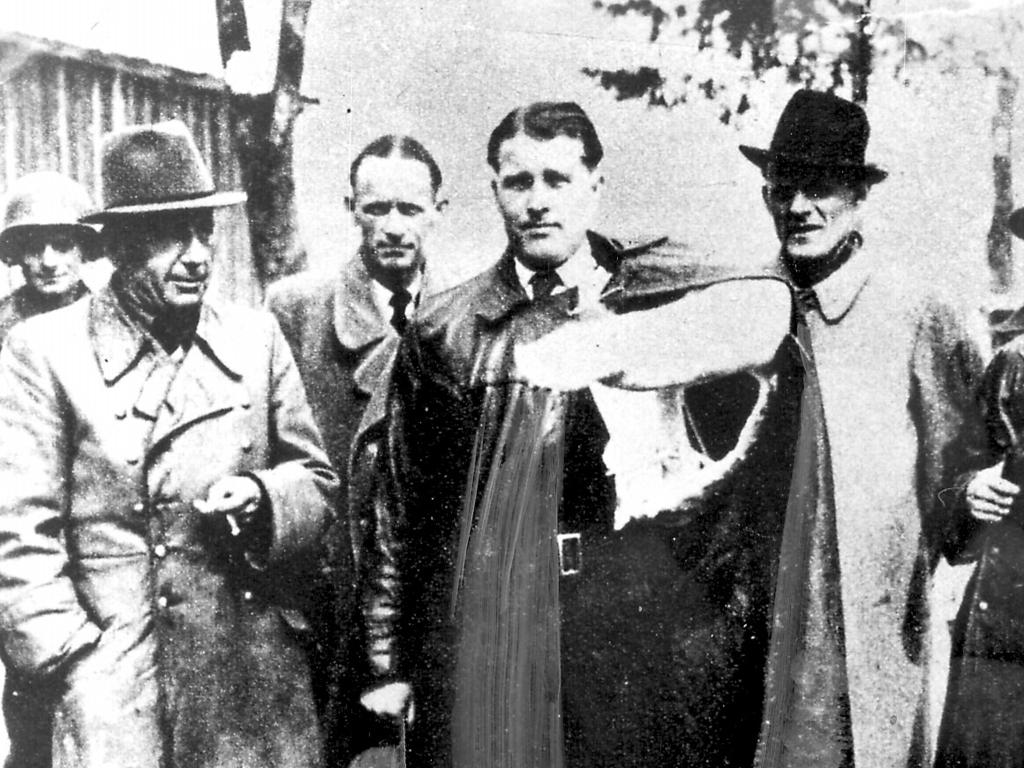How a Nazi with a deadly rocket launched the US space program and put a man on the Moon
Australian aircrew tried to kill him. His extraordinary rockets killed hundreds. This rocket scientist went on to put the first person on the Moon. But everyone wanted to forget him.
He aimed for the Moon. But, sometimes, he hit London. His vision was behind humanity’s greatest achievement. But Wernher von Braun was also a Nazi.
He was lauded as the father of America’s space program. It’s no surprise he’s quietly being forgotten during the 50th Anniversary celebrations of the first Moon landing.
Von Braun was smart. He was charming. He was optimistic.
But he had a past.
He had been a member of the Nazi’s brutal Waffen SS.
Von Braun had insisted his personal slate was clean.
But his secret Peenemünde rocket testing facility exploited slave labour. And von Braun did not protest. The death toll from the beatings conducted beneath his eyes climbed into the thousands. Some he had chosen himself for their useful technical skills.
Von Braun did not flinch when he had Nazi Germany’s highest honour — the Knight’s Cross — pinned to his breast — even as his V-2 rockets dramatically flared into the sky behind him.

GREAT ESCAPE
Von Braun had been a prime target: The Royal Australian Air Force 467 Squadron, flying Lancaster bombers, had been among the many tasked with pounding him and his work into dust.
Then, in the rush to secure German technology after the fall of Berlin, Britain, the United States and Russia were eager to seize as many of its leading minds as possible.
Scientists. Designers. Researchers. Test pilots.
Along with examples of their jet aircraft, rockets, missiles — anything thought to be of interest — they were shipped out of Germany to help prepare for the coming Cold War.
But von Braun was the greatest prize. His work helped pave the way to the modern world’s intercontinental ballistic missiles, cruise missiles, and heavy-lift rockets.
Von Braun knew his value. So, just days before the Russians overran his Peenemunde research facility, he — and many of his colleagues — surrendered to the Americans.

Big problem with moon conspiracy theories
The incredible story behind The Dish
How to get your copy of One Giant Leap magazine
EXPANSIVE VISION
As a child, he had devoured the future-fantastic books of H.G. Wells and Jules Verne. “It filled me with a romantic urge. Interplanetary travel! Here was a task worth dedicating one’s life to,” he later recalled. The visions of space travel, futuristic war machines and tantalising technology inspired the youth to try and build such things himself.
So, von Braun did.
The enthusiastic 16-year-old youth bolted a batch of toy rockets to a cart. He took it to the footpath. Ignited the fuses. And observed as it careened off the walls of a nearby alley — and sent pedestrians scattering.
The police came knocking.
“It never occurred to me,” the biography on Braun: Dreamer of Space, Engineer of War, records, “that they were not prepared to share the sidewalk with my noble experiment.”

PLAUSIBLE DENIABILITY
Von Braun insisted he had always been “naive” about politics, and that his real aspiration was always to put people into space.
Exactly how naive, however, remains uncertain.
His father had been press secretary to the German Chancellor during World War I and held deep anti-democracy sentiments. And, when von Braun later attended the Berlin-Charlottenburg Institute of Technology, he eagerly accepted military funding to further his research.
When he died in 1977, his new New York Times obituary stated: “On Sept. 7, 1944, the first V‐2 was fired at London, followed by scores of others in the remaining months of World War II. At the time Dr. von Braun is said to have remarked to a friend that the rockets worked perfectly except for landing on the wrong planet.”

HISTORY JUDGES
While working for the US, von Braun published a book tackling the idea of settling Mars. He wrote articles for popular magazines about space stations using centrifugal force as artificial gravity. He became a popular figure on another new invention — television.
But his big moment came amid the panic after the Soviet Union’s surprise launch of the world’s first satellite — Sputnik. He was assigned to work on the project that led to the Saturn V rocket that would carry the Apollo missions to the Moon.
Upon the scientist’s death, President Carter eulogised Dr. von Braun as a man of bold vision: “To millions of Americans, Wernher von Braun’s name was inextricably linked to our exploration of space and to the creative application of technology. Not just the people of our nation, but all the people of the world have profited from his work. We will continue to profit from his example.”
But von Braun remained unrepentant for his work with the Nazis: “ We wouldn’t have treated your atomic scientists as war criminals, and I didn’t expect to be treated as one. No, I wasn’t afraid. The V‐2 was something we had, and you didn’t have. Naturally, you wanted to know all about it.”
Originally published as How a Nazi with a deadly rocket launched the US space program and put a man on the Moon



